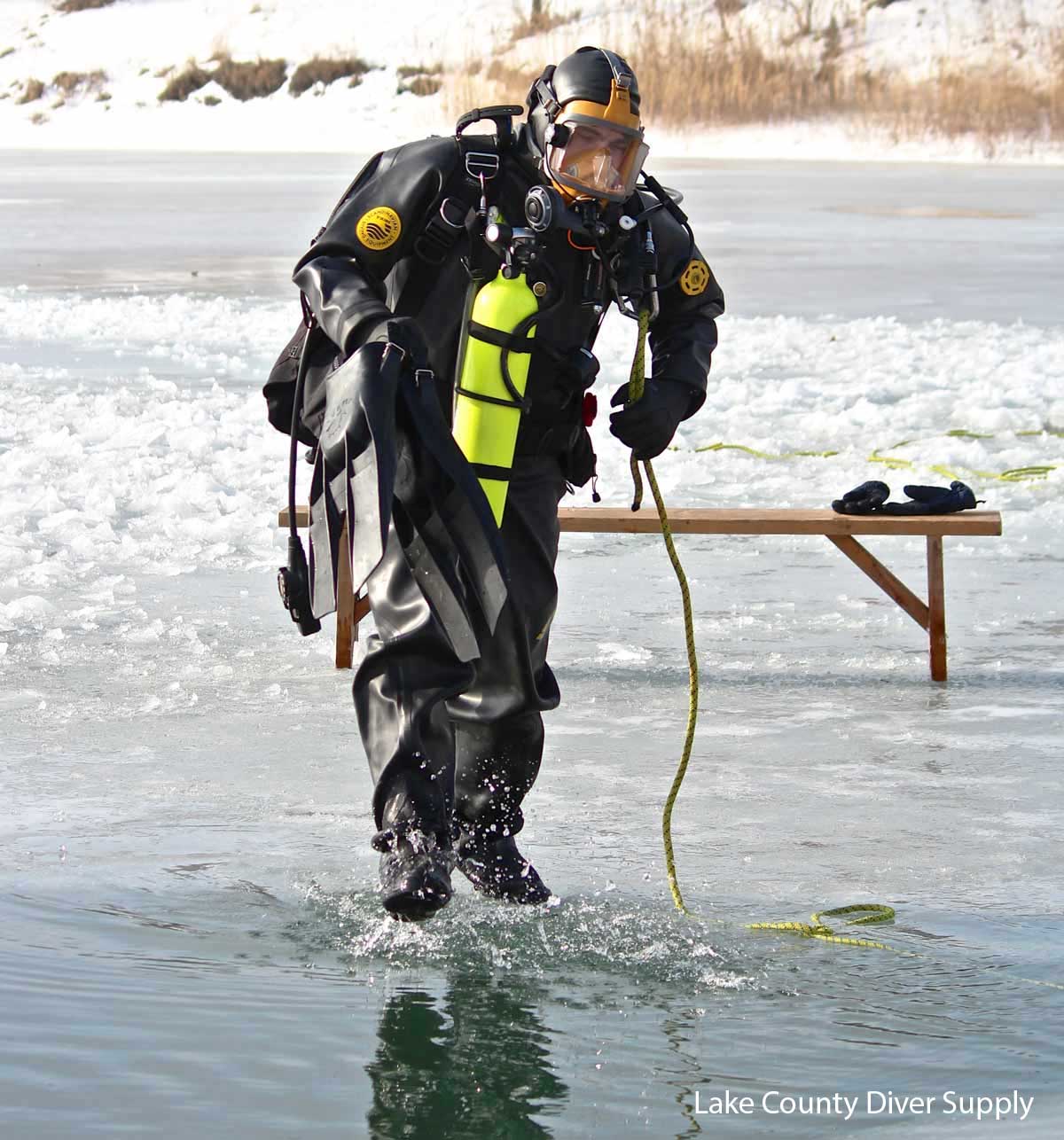How to Avoid Hypothermia in Search and Rescue Diving
How to Avoid Hypothermia in Search and Rescue Diving
By: Dr. Thomas Powell

1) Exposure Protection
The most obvious method of reducing the threat of hypothermia is to wear the proper exposure protection. In the world of public safety diving, dry suits are essential. Dry suits create a barrier of air between the diver and the natural environment. The problem with dry suits is that they often have little or no properties that provide thermal protection. For this reason, public safety divers must consider the use of undergarments. Undergarments come in various weights and sizes designed to provide different levels of thermal protection. The best thing that any dive team can do is analyze the temperatures it faces within the region it operates. Various undergarment weights may be needed to allow for proper thermal protection during temperature changes throughout the year.
Dive teams around the United States often forego the use of undergarments. Instead divers will wear street clothes or “sweat clothes” underneath dry suits. The problem with “sweat clothes” is that they are often made of cotton, which retains moisture such as sweat. Allowing wet cotton to remain against the skin can cause the diver’s body temperature to drop as the material cools. Similarly, street clothes often provide little or no thermal protection. For these reasons, dive teams should consider looking into the various types of thermal protection designed for dry suit use within the scuba industry. Once undergarments are selected, the divers must train in the use of these undergarments. Differing types of undergarments often have differing buoyancy characteristics and may require weight adjustments for each diver. Similarly, with the addition of extra material, divers need to practice underwater skill sets to ensure capability and comfort.
2) Reduced Bottom Time
Many public safety divers develop a mindset focused on success. In many cases, this mentality is essential to remain focused and capable when faced with harsh conditions and no visibility underwater. The problem that can arise with this mindset is that divers will often push limits and take unnecessary risks. For this reason, a diver may request to stay underwater longer and increase the risk for the development of hypothermia. Team leaders, supervisors, and even tenders must watch for this attitude and make sure that divers stay within safe limitations. In many cases, the development of maximum bottom times can be developed within team standard operating guidelines to ensure that all divers stay within reasonable time-based dive limits. If these standards are developed, teams must train to perform and enforce time restrictions. Public safety divers must remember that they go on missions to help others, but not to take risks that may add death or injury to an already problematic situation.
3) Medical Support
In many cases, dive teams do not take advantage of resources located within their communities. These resources may be firefighters trained in hazardous materials decontamination, law enforcement personnel trained in scene security or crime scene investigation, or emergency medical technicians. Medical personnel are critical to the success of any public safety dive operation. If emergency medical technicians or paramedics are available to take baseline physiological readings before divers enter the water, they will have an improved likelihood of recognizing physical changes as divers exit the water. After any diver exits the water and undergoes any needed decontamination, the safest action to take is to have the diver checked out by medical personnel. Professionals of this type can recognize the onset of hypothermia and take corrective actions as needed to ensure diver safety. Emergency medical technicians and paramedics can also help to ensure that divers remain hydrated and intake calories to help fight off problematic physiological situations. In certain cases, medical personnel will even offer heated vehicles as a location for chilled divers to fight off the onset of hypothermic conditions. If medical personnel who are not members of a dive team are going to be used during active missions, they should be invited to partake in training to ensure that all parties will understand how each other will react and perform during a real mission.
4) Practice and Training
The primary action that any dive team must establish is regular training. Training ensures that divers do not become complacent and that team members and associated parties understand how to act, perform, and behave during real missions. Training evolutions are the perfect time to practice regulated periods of bottom time, interactions with medical personnel, and even skill proficiency using condition-specific equipment. Training and practice will ensure that divers are best protected and that a team understands how to recognize and react to problems that are out of the ordinary such as a diver suffering from hypothermia.
Hypothermia is a condition that can debilitate a diver and his or her team. If a diver goes down, the team may lose a critical member. Similarly, the diver may face a serious personal ailment. Public safety divers must obtain and then maintain the proper equipment needed to fight the potential for hypothermia. These divers must then work to establish a manner in which they can train to best monitor, evaluate, and care for team members in a fashion that best supports operational objectives. More than anything, public safety divers must care for themselves, and work to support the community in which they dive rather than take unnecessary risks that could cause self-harm or injury.


Lascia un Commento
Vuoi partecipare alla discussione?Sentitevi liberi di contribuire!